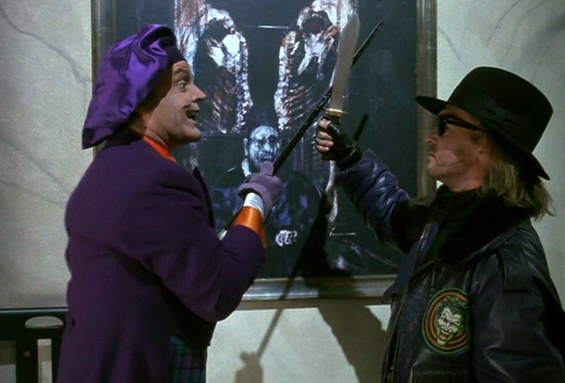Thanks for visiting Art History Abroad’s blog, we hope you enjoy it. We run brilliant Summer and Gap Year courses for students aged 16+. Follow our courses on Instagram or read our ⭐️⭐️⭐️⭐️⭐️ reviews on the GoOverseas review site, or watch our video.
“You have to look to art to teach you and guide you in terms of expressing things beyond dialogue”
When The Dark Knight was released in 2008, it was an immediate critical and commercial success – not least due to Heath Ledger’s Oscar-winning portrayal of The Joker. While The Joker is no new character, having appeared in Batman comics since 1940, Ledger and director Christopher Nolan brought a darker, more nuanced interpretation to the role. This was not the giggling ‘Clown Prince of Crime’ people had grown accustomed to, but an anarchic and sinister sociopath. In a recent interview with the Tate for their Film Meets Art series, Nolan revealed how his disturbing and violent villain had been influenced by an artist who often saw those same two words applied to his works – Francis Bacon.
In the interview, Nolan discusses tackling the issue of The Joker’s make-up. Previous depictions had put the character’s white skin, green hair and bright red mouth down to falling into an open vat of unspecified chemicals. Clearly this would not do for the grittier, more realistic universe of Nolan’s Batman films. The problem was solved when the director brought a book of Francis Bacon’s art to the set. A concerted effort was made to incorporate Bacon’s distortions and mixtures of colour into The Joker’s make-up, ‘letting it have a kind of slightly worn-through quality’. Looking at the images below, the influence is clear.
It is not just the appearance of Ledger’s Joker that bears the mark of Bacon, but his character also. In the interview, Nolan talks about the artist’s use of dark spaces in his art, and how this relates to his filmmaking:
I quite like the paradoxical nature of it. The more he removes, the less he tells you really about what’s out there, the more I find myself thinking about what’s in that dark space behind.
You never have the resources to fully create the world that you’re creating so you are leaving a lot of voids, leaving a lot of gaps. So part of what you’re trying to do is using those necessary gaps intelligently, so that where you’re not showing something, it’s helping you rather than feeling the limitations of the world you’ve created.
The Nolan/Ledger Joker differed from many of his past iterations in the fact that rather than explicitly assigning him a backstory, or ignoring it altogether, they deliberately obscured his past. By having him tell different versions of the story of how he got his scars to different people, the audience is left not knowing which, if any, is real. The resulting effect is of a truly unnerving, yet fascinating character. Leaving the ‘gaps’ may have been necessary (for reasons of time or the flow of the film) but Nolan, like Bacon, paradoxically uses the void to enhance his work. The effect for the audience is the same as that which Bacon has on Nolan – they are left ‘thinking about what’s in that dark space behind’.
Interestingly, while Nolan developed the Bacon link, he was not the first to notice the connection. Tim Burton’s 1989 Batman film has the Joker intervening to save just one piece of art from destruction at a museum: Francis Bacon’s Figure With Meat.
The influence that art has had, and continues to have over film is monumental. The connections are by no means limited to the few presented by the Tate. For example, Nolan’s next film, Inception, borrows the impossible architecture of M.C. Escher for its dream sequences; Martin Scorsese has spoken of the debt his Mean Streets owes to Caravaggio; and several of Alfred Hitchcock’s best films contain nods to Edward Hopper. Bacon himself inspired not only Nolan, but also James Cameron’s Alien. His Study After Velázquez’s Portrait of Pope Innocent X reportedly inspired the monster’s mouth. The fact that Bacon modelled the mouth in that piece after a still from the 1925 film Battleship Potemkin illustrates nicely the symbiotic relationship that art and cinema share.



I came here seeking a link from Bacon to Edward Hopper and got a tad bit more. Thank You